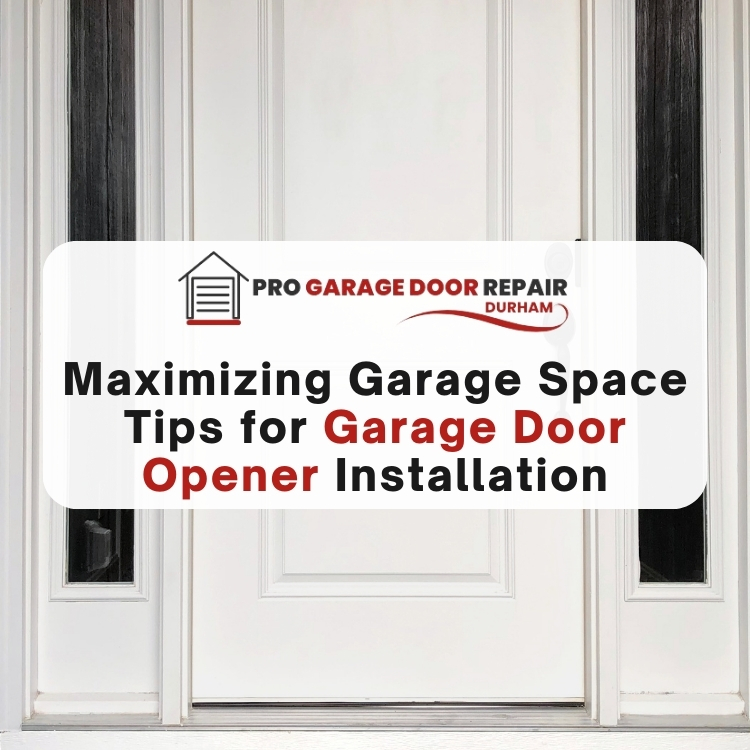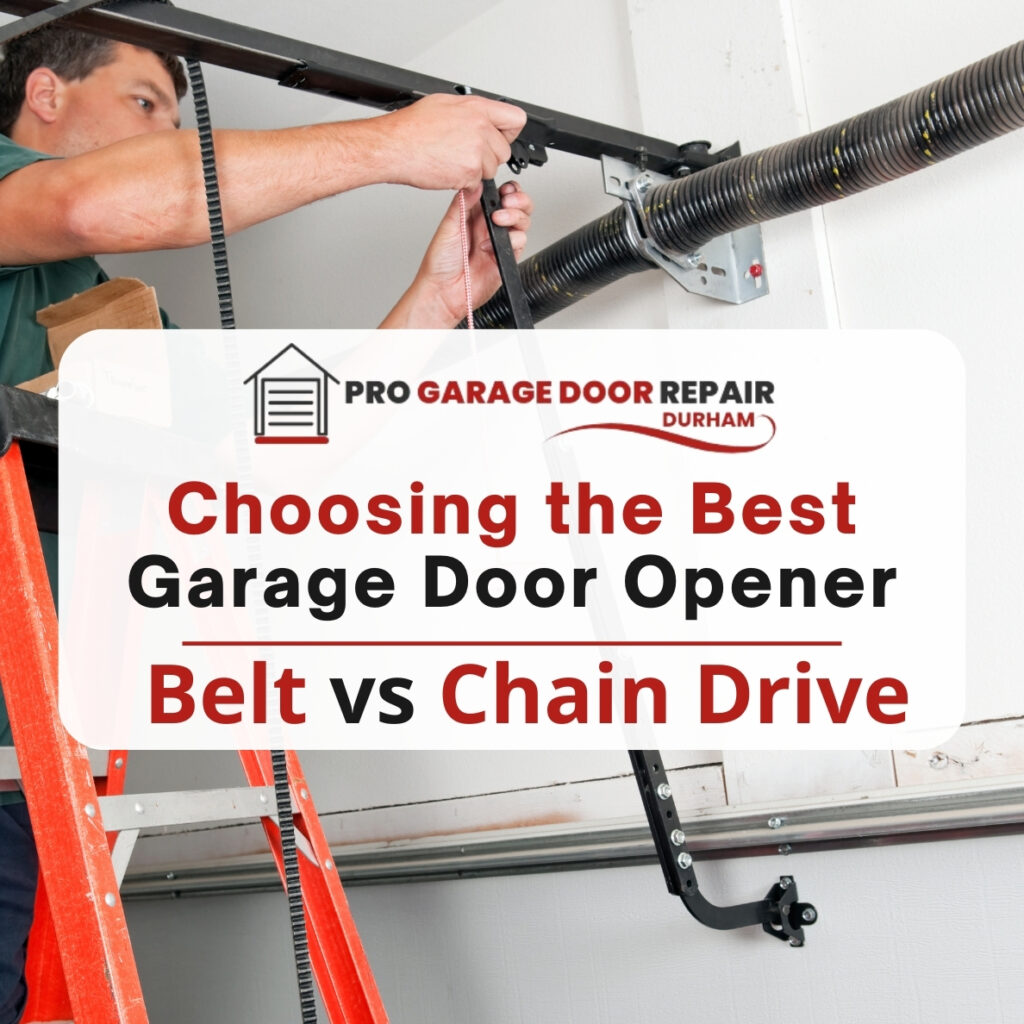Your garage serves many purposes – storing vehicles, housing tools and sporting equipment, working on DIY projects, and more. Maximizing your valuable garage space becomes crucial as you acquire more gear and vehicles. Installing a new garage door opener provides the perfect opportunity to reclaim floor space and better organize your storage. However, choosing and mounting the opener properly makes all the difference. Follow these garage door opener installation tips to optimize your overhead room, parking, and storage capacity.
Prepare the Installation Area Thoroughly
Before installing the mechanical opener system, take time to thoroughly prepare the garage interior. Decluttering and cleaning before mounting the new garage door opener gives you room to work efficiently and also shows you what storage solutions to focus on afterward.
Decluttering and cleaning before mounting the new garage door opener gives you room to work efficiently and also shows you what storage solutions to focus on afterward.
Begin by removing storage items from the floor area and cleaning up. You’ll need a wide empty swath of floor space to work in. Some preparation tips include:
- Remove vehicles, freestanding storage racks, tool cabinets, and anything else taking up floor space in the installation areas. Move them to an out of the way spot temporarily or into the driveway if needed.
- Dispose of or donate any clutter and unwanted items you come across to aid the garage cleanup.
- Thoroughly sweep the concrete floor so you have a clean surface to work on.
- Clear cobwebs and dust from the walls, garage door tracks, and ceiling area where you’ll mount the new opener.
- Check for any signs of ceiling damage or weak structural supports above the opener location. Reinforce them to ensure you mount to solid framing or blocking.
Freeing up space and cleaning the area allows for safe and easy installation of the new garage door opener. For even more room, removal of the old opener unit can happen now or after prepping the new unit.
Precisely Measure Your Garage Door Opening
Measuring the existing garage door correctly ensures you get the properly sized replacement opener unit. Note the exact door width and height, checking in three places – the bottom, middle, and top areas of the door. Account for any gaps or damage issues if the door isn’t sealing well at the jambs and header.
Other key measurements include:
- Distance from each side wall to the door frame. This shows clearance you have for positioning the opener.
- Structural support areas above the door like beams or full ceiling framing to securely mount into.
- Amount of ceiling space and headroom height to fit the opener unit.
If your measurements reveal an extra wide or tall door, you may need extension brackets or considerations for a heavy-duty double opener installation. For bonus storage solutions, also measure open wall space to plan for shelving, cabinets, overhead racks, pegboards, and other organizational systems you can install after the opener to maximize usable space.
| Measurement | Dimension |
| Garage Door Width | 10 ft |
| Garage Door Height | 8 ft |
| Side Wall Clearance | 18 inches |
| Ceiling Height at Peak | 12 ft |
Having accurate garage door opener dimensions ensures getting the right size and capacity unit for your space and door.

Select a Space-Saving Garage Door Opener Model
The model of garage door opener mechanism greatly impacts how much overhead room it requires and proximity to the door for operation. Consider the following space-saving features when selecting your opener:
Choose a Low-Profile Opener Design
Garage door openers come in various overhead space profiles, with some designs requiring as little as 7 inches while others need 14 inches or more. Measure your ceiling height and compare to specs of units you’re considering to determine which models fit your available headroom.
Getting the lowest possible overhead profile prevents crunching your space. Chain drive openers compactly mount right above door level on the wall, while long belt drives require much more ceiling height but operate more quietly.
Opt for Chain Drive Mechanisms
In terms of compression versus torsion style garage door spring systems, chain drive openers result in minimal loss of ceiling height. The gear mechanism neatly tucks against the wall versus sprocket rails running along the ceiling.
Chain drive models only need about 8-12 inches of mounting depth. This saves considerable overhead space compared to bulkier belt drives. Just note that chain drives make more mechanical noise during operation.
Consider Dual Openers on Wide Doors
For extra wide double garage doors measuring over 16 feet across, dual openers provide enhanced lifting power and safety. They also don’t require extended sideways ceiling supports as a single extra-wide model would.
Installing two single garage door openers on each half saves overhead clearance. Plus if one fails or needs repair, the other lets you still open and close the door in the meantime.
Strategically Mount the New Garage Door Opener
Carefully mounting the opener close to the door, properly braced, and aligned to the control wall unit maximizes usable space rather than having it encroach farther into your garage interior.
Install Close to the Door
Ideally, mount the new opener unit just past the door tracks with only an inch or two clearance gap. This saves the most interior floor space. Door openers work optimally installed close to the opening rather than 3-4 feet back.
Just be sure it doesn’t obstruct smooth operation or bump against the horizontal door tracks or door edges.
Secure Opener Properly to Ceiling Structure
Firmly anchor the garage door opener into solid blocking or double framing built between ceiling trusses or joists. Reinforce any weakened ceiling structure beforehand to properly support the door opener weight of 100-400 lbs.
(Proper anchoring prevents vibration issues leading to noisy operation over time or safety hazards if it pulls free from the ceiling.)
Align with Wall Control Box Placement
When positioning the garage door opener unit, align it with the intended wall-mount location for the control box, whether on the side interior walls or storage-friendly exterior wall.
Consider the door control wire length and route to the control when placing both elements. Tucking the wire neatly keeps it safe from damage.

Strategically Organize Garage Storage for Maximum Space
Adding storage racks, shelves, and cabinets next to parked vehicles and on empty walls after opener installation further optimizes unused space.
Install Wall-Mounted Storage First
Once the opener mounts securely overhead out of the way, taking advantage of vertical wall space offers headaches-free storage. Typical options include:
- Corner shelves for neatly tucking away odd items.
- Floor to ceiling racks with adjustable shelving brackets to customize.
- Pegs, hooks, and bins for organizing tools, gear, and supplies off the floor.
- Narrow utility cabinets for paint cans, automotive fluids, cleaners.
Use Ceiling Space for Overflow or Rarely Accessed Items
The garage ceiling area offers additional storage real estate, either right below roof rafters or suspended from the ceiling framing. Possible options include:
- Netting hung from beams to stash infrequently used items like holiday decorations
- Shallow racks mounted to beams or trusses to take advantage of overlooked space above parked vehicles
Optimize Vehicle Parking Spots
Clearing out old vehicles and establishing set parking locations for regularly used cars and trucks prevents wasting room to narrow maneuver spaces.
- Create floor guides showing ideal parking locations to train family members.
- Park larger vehicles and those used less often in rear spots out of the way.
Our Garage Door Opener Installation Services
We offer complete garage door opener installation, replacement, and repair services. Our experienced technicians ensure proper preparation, precision measurement, space optimization, and secure mounting of any garage door opener brand. We also provide recommendations on compatible accessories, storage solutions, parking layouts, and smart controls to maximize your garage space around the new opener system.
For professional new opener installations, replacements, or existing system repairs, contact our service department today to schedule a site evaluation. We service all makes and models of openers and can recommend the ideal capacity system matching your garage setup. Investing in a properly selected and expertly installed opener makes everyday access into your home smooth, safe, and convenient for years to come.
Broken Garage Door Opener Repairs
If your existing garage door opener acts up, makes odd noises, fails to open or close, or shows other problems, prompt repairs prevent total system failure. Catching minor issues early also avoids damage to the door itself from improper strain.
Contact our repair technicians anytime for expert diagnosis and repairs. Common opener issues stem from worn opener/closer cables off their pulleys, bent rail sections, misaligned sensors, chronic remotes losing programming, and general motor failure after years of use. We troubleshoot everything from opener wall unit problems to complex door tracking and spring assembly failures. Lean on our expertise rather than risking injury tackling complicated garage door repairs yourself.
Conclusion
These garage door opener installation tips teach you how to fully optimize usable overhead, floor space, and storage options. Preparing your garage interior before installing the door opener lays the groundwork for improved organization later. Precision measuring ensures acquiring the best-sized low-profile opener. Proper mounting of the opener close to door tracks and structurally braced maximizes clearance. Finally, strategically adding storage elements like racks, cabinets, and suspended ceiling units conquers clutter while taking advantage of all possible space in your garage.
What type of garage door opener maximizes overhead room?
Belt drive garage door openers with side-mounted rails maximize overhead clearance because they don’t require as much space above the door for the drive mechanism. Models with optional ceiling extensions also clear obstructions. Just check that side room allows for belt rail.
How much clearance do you need around garage door opener?
It’s recommended to have 1 to 2 inches of clearance around the sides of the garage door opener. This prevents the opener from bumping the walls as it moves with door operation. If space is tight, careful measurement and centering the opener ensures smooth function.
Should you mount the garage door opener close to the door or far back?
Mount the garage door opener close to the door, just past the horizontal tracks. Leaving only an inch or two gap prevents wasting interior floor space yet avoids contact. Mounting it farther back eats into useful storage and parking areas. Garage door openers work best operationally when installed close to the door being opened.



